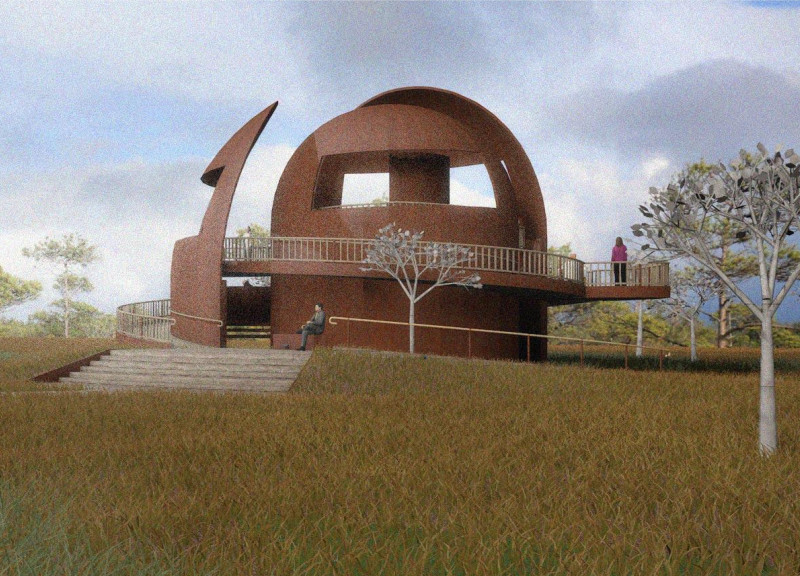5 key facts about this project
The Kemeri Observatory is an architectural project designed to serve as an observation facility that harmonizes with its natural environment. Located in a landscape characterized by wetlands and rich vegetation, the observatory emphasizes the relationship between human interaction and nature. The project is organized around a spiral form, encouraging exploration and providing incremental views of the surrounding landscape. This architectural approach enhances user experience by creating a seamless transition between the interior of the building and the natural world.
Unique Form and Natural Integration
The design incorporates a logarithmic spiral that aligns with principles of biophilic design. This approach emphasizes natural forms and integrates the building into the landscape, reducing its impact on the environment while enhancing visual connectivity. The use of curved elements in the structure supports a gradual ascent through different viewing platforms, allowing visitors to engage with various perspectives of the site. Each viewpoint is purposefully designed, encouraging visitors to pause and appreciate their surroundings.
The materials selected for the observatory, including corten steel, pressure-treated wood, and concrete, contribute to both the aesthetic and functional aspects of the building. The weathering steel provides durability while blending organically into the environment. The wood elements enhance tactile interactions and reinforce the connection to nature, while concrete ensures stability throughout. Solar-powered LED lighting is thoughtfully integrated to minimize disruption to the landscape, promoting sustainability in architectural design.
Functional Spaces and User Experience
The observatory is designed to facilitate a diverse range of activities, including solitary reflection and community engagement. The ramps are designed with an 8% slope to ensure accessibility, encouraging a relaxing experience as visitors move through the facility. The layout not only supports practical observation of the surrounding environment but also fosters communal interaction.
Strategically placed viewports frame specific landscapes, further enhancing user experience by creating focal points that draw attention to the beauty of the site. This thoughtful design approach nurtures an appreciation for the natural world, stimulating curiosity and engagement.
For those seeking further insights into the Kemeri Observatory, it is recommended to explore the architectural plans, sections, and designs provided in the project presentation. Detailed examination of these elements can enrich understanding of the architectural ideas that underpin this unique project.



























